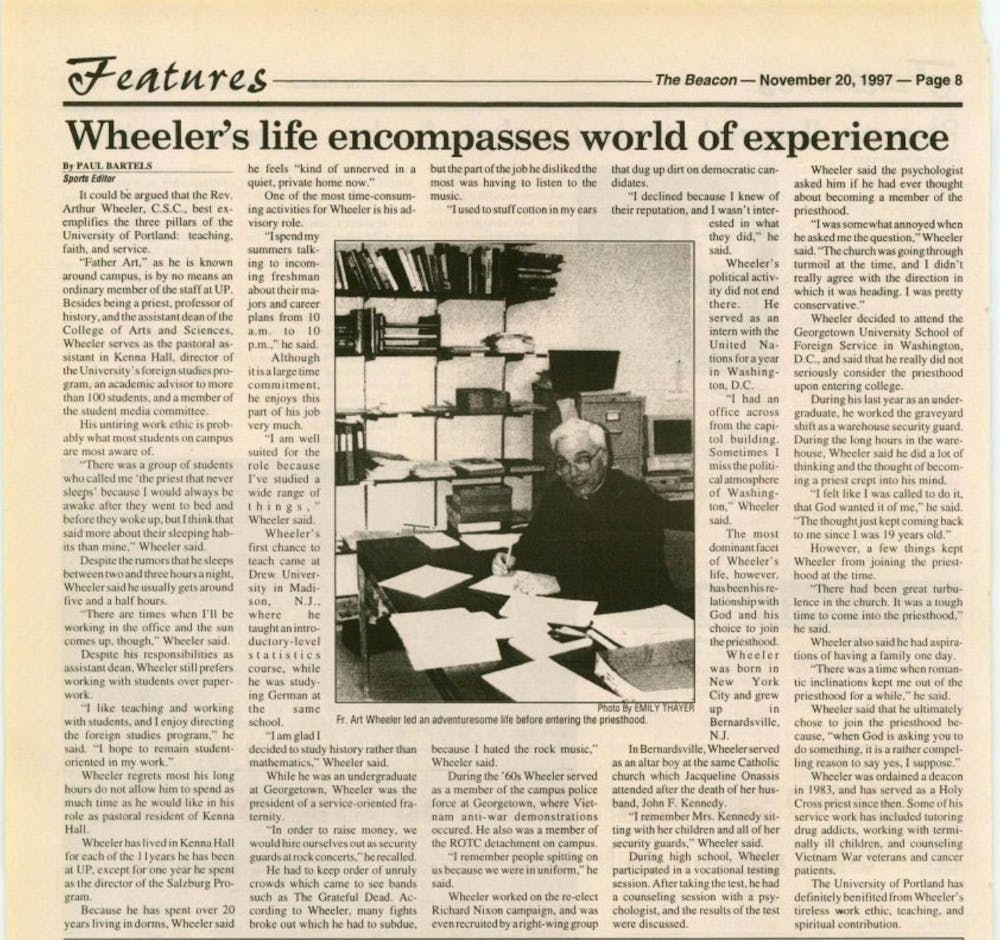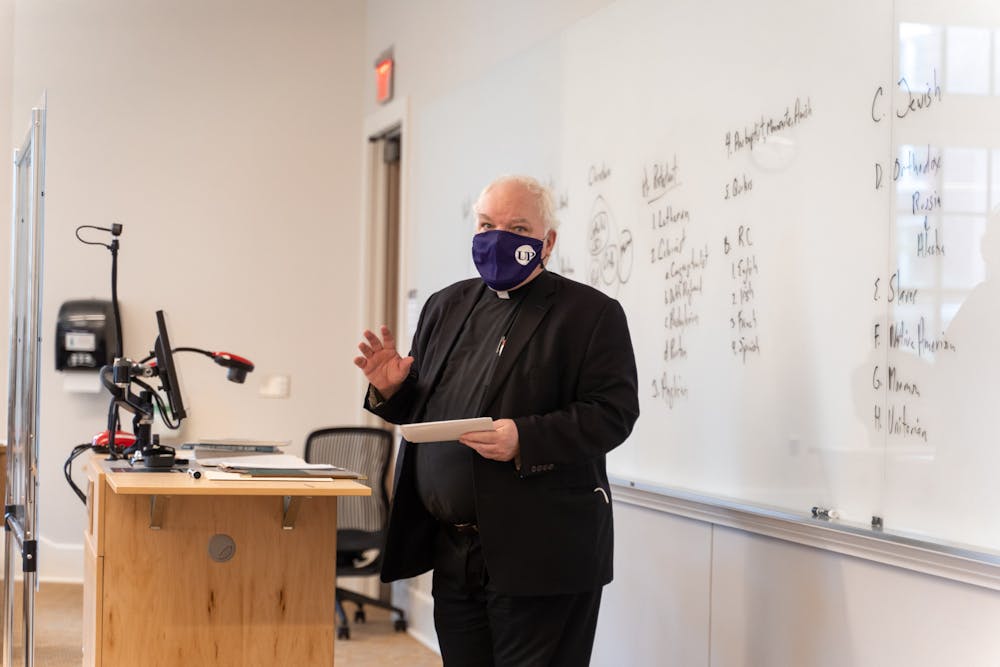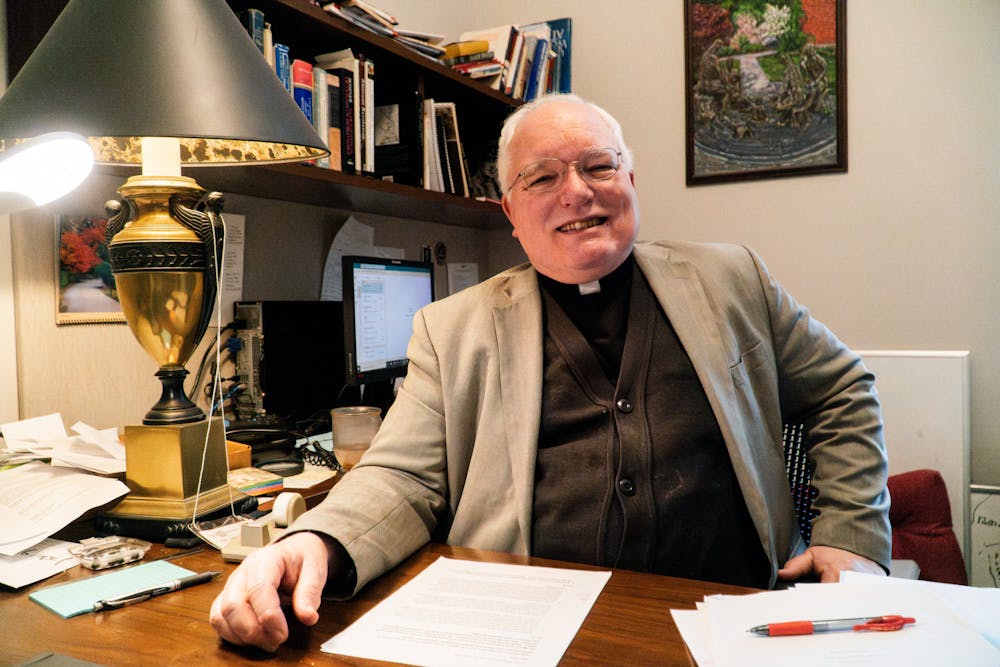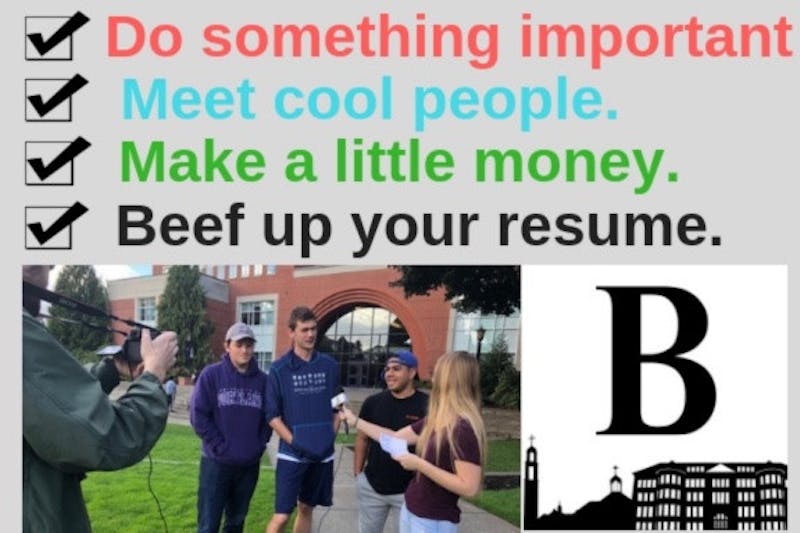In 1997, The Beacon published a profile of Rev. Arthur Wheeler, CSC, with the headline: “Wheeler’s life encompasses world of experience.”
The University of Portland has changed in the 28 years since that article was written, but the headline still rings true.

Fr. Wheeler — or Father Art — plans to retire this spring after 38 years of campus service as a history professor, pastoral resident and adviser, among other roles.
Ahead of his departure, The Beacon sat down with Fr. Wheeler to reflect on his tenure and the changes he’s seen at UP — from enrollment, to student media, to campus culture.
On how students have changed
“I lived in the dormitories for many years, and the way students interact with one another has changed greatly... I would say some students are much more intensely religious now than they were in the past, but the number of them who are intensely religious may be lower. Some students are very politically aware. Others could not find Ukraine on the map of the world. Does that surprise me? No, I went to college when people thought, ‘As soon as I graduate from college, I'm going to be drafted into the army and I'm going to be fighting in Vietnam.’ That was a different frame of mind.”
On enrollment and housing
“There have been a lot of changes over the years. The University is still very small, but it's bigger than when I came here by a good bit. It's more residential than when I came here. Students [who] live on campus, or live in university-owned housing — that used to be around maybe 60% [but now has] gone up to about 80%. Most of the students who are here live, if not on campus, near campus.
“When I first came here, we had a lot more transfer students, and our total first time freshmen were right around 500. Then it went as high as 1,050, and now it's settled somewhere in the 700s. And so those are pretty big shifts. But there were years here where every room was taken, and doubles were triples, and there were waiting lists of people to be able to come to live on campus. But what students are looking for in college — whether they want to live off campus or on campus — that changes a lot from year to year.”
On academic programs
“The nursing school would graduate about 50 students a year in my early years. [The] nursing school is huge now, graduating maybe four to five times as many people… [They] had to scramble at times to try to hire enough faculty members to expand.
“[The] education school has stayed pretty much the same. CAS [College of Arts and Sciences] used to be well over half the total [student body], as much as all the professional schools put together.
“There were times when our Spanish program was really thriving, but things like the willingness of students to study foreign languages ebbs and flows… Some of the languages have changed in enrollment. [UP] tried [teaching] Chinese, we tried Japanese.
“There were [also] some programs that are completely new — we didn't have gender studies when I came [to UP].”
On changing attitudes toward career
“I think there are a lot of students who feel, ‘I've really got to get a good education because I need a good job, because [if] I don't have a good job, I'm just not going to survive financially.’ Whereas years ago [it] would be like, ‘If I graduated from college, I'm golden…’ But when college costs $70,000 a year, parents [are] very attentive to things like, ‘Is he going to graduate on time? Are there good jobs connected with this pathway?’”
On The Beacon’s transition to digital publishing
“The digital thing is a very different kind of product, in some ways, than a weekly paper… With digital, it's a much more flexible product, both in terms of timing and those kinds of things. But they would be working late at night for deadline. And deadline was a hard deadline because they sent it out to an outside publisher.”

On campus culture before and after the pandemic
“When I first came here, there were so many students who had relatives who had already been here — cousins, brothers, sisters, mothers, fathers. And many of them knew each other. They had gone to high school with one another. And I was surprised that they were almost always here. That on a weekend, most of the students who went to school here were here on Friday night, they were here on Saturday night — the soccer games would be packed… COVID really threw a wrench into that for a while. More and more students devised their own entertainment. They make their own fun.”
On takeaways from being a pastoral resident
“There are no generic students. There isn't a student mentality. There are individual students. And sometimes you can aggregate data and things like that. But what I learned as a priest and living all those years in the dorms is there are no generic students. Every one of them is different, and what you see on the surface is oftentimes not what is really going on underneath.
“Sometimes the students who seem the most confident are the most insecure, and sometimes the students who seem lost and searching really have their act together a lot more than you'd think. There are students who are amazingly hard working and amazingly generous. It's not always clear who is in which category at the beginning.”
Riley Martinez is the Copy and Opinions Editor for The Beacon. He can be reached at martinri24@up.edu.








